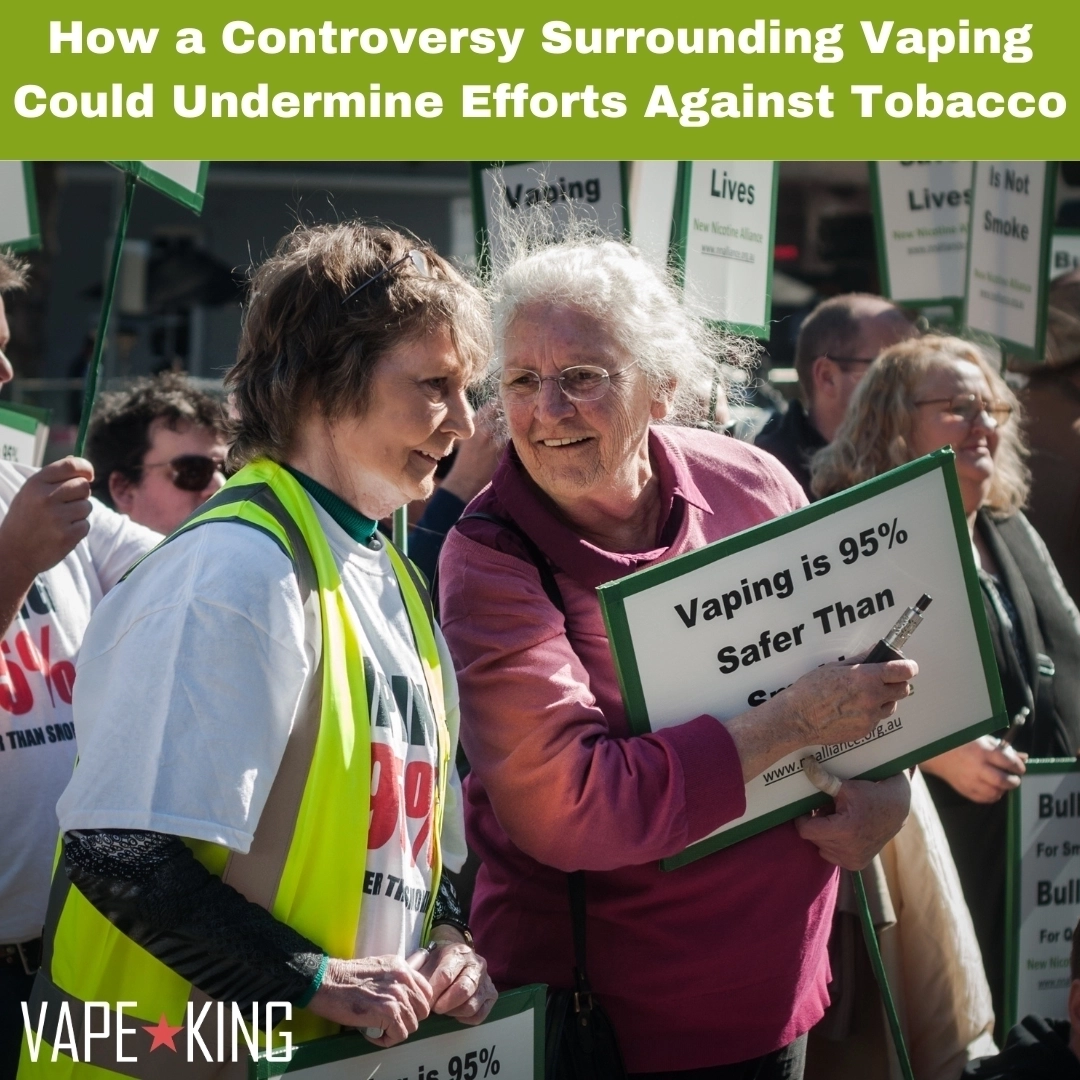How a Controversy Surrounding Vaping Could Undermine Efforts Against Tobacco

For decades, Cliff Douglas waged battles against the tobacco industry. As a legal advocate, activist, and executive within nonprofit organizations, he tirelessly sued cigarette manufacturers, championed whistleblowers, and spearheaded campaigns to prohibit smoking aboard airlines.
Given his extensive background in the anti-smoking movement, many were taken aback when, in October, he assumed the role of CEO at the Foundation for a Smoke-Free World. This nonprofit, fully backed by Philip Morris International, one of the globe's largest tobacco corporations, seemed an unlikely fit for someone with Douglas's track record.
Having previously served with esteemed organizations such as the American Cancer Society and the American Lung Association, Douglas views his new position as a natural progression of his lifelong anti-smoking endeavors. However, he agreed to join the foundation only after ensuring that it would maintain complete independence from Philip Morris.
His vision for the foundation involves fostering collaboration among various stakeholders, including foundations, nonprofits, public health experts, elected officials, regulators, and academics, in a unified mission to combat the death and illness caused by smoking.
Yet, navigating these waters won't come without its challenges. Today, anti-smoking groups find themselves entangled not only in battles against tobacco companies but also in internal disputes, at times marked by acrimony.
Acknowledging the obstacles ahead, Douglas remains resolute. "I'm fully aware of the hurdles we face," he asserts.
The stakes are significant. Smoking remains the primary cause of preventable death in the United States, claiming approximately 480,000 lives annually, as reported by the Centers for Disease Control and Prevention. To achieve success, Douglas must navigate what he describes as a "highly contentious, polarized landscape" that impedes the efforts of nonprofits, foundations, governments, and academics dedicated to tobacco control. These entities have become divided over the concept of tobacco harm reduction, which advocates for providing alternatives, such as e-cigarettes, to individuals who are unable or unwilling to quit smoking. E-cigarettes offer a way to deliver nicotine without burning tobacco.
Bloomberg Philanthropies and its supported nonprofits, including the Campaign for Tobacco-Free Kids, as well as well-established organizations like the American Cancer Society, the American Lung Association, and the American Heart Association, have vigorously campaigned to restrict access to e-cigarettes. The Campaign for Tobacco-Free Kids has particularly focused on what it continues to characterize as a "youth e-cigarette epidemic," despite a more than 60% decline in teen vaping since its peak in 2019. Their argument revolves around the concern that e-cigarettes could lead to a new generation becoming addicted to nicotine, even if they refrain from traditional smoking.
With financial backing of $300 million (ZAR5 630 190 000.00) from Bloomberg philanthropy and supplemented by political contributions from Michael Bloomberg, the anti-vaping factions have successfully lobbied five states – California, Massachusetts, New Jersey, New York, and Rhode Island – to prohibit the sale of flavored e-cigarettes. Going a step further, the nonprofit Truth Initiative asserts its dedication to “eradicating tobacco use and nicotine addiction,” a goal that necessitates the removal of all e-cigarettes from the market. Some municipalities, such as San Francisco, have already taken this step.
However, Douglas and his supporters in the harm reduction movement argue that these measures have had catastrophic consequences. Prohibitions on flavored e-cigarettes, now enforced in nearly 40% of the United States, have reportedly led to increased sales of traditional cigarettes, as indicated by various academic studies and financial analysts.
“These bans discourage the use of a significantly safer product and steer individuals back towards a product that poses a one-in-two chance of mortality,” asserts Douglas.
This argument poses a threat to the advancement of one of the most triumphant public health endeavors in history. The prevalence of smoking among Americans has plummeted from 42% in 1964 — coinciding with the inaugural Surgeon General’s report highlighting the perils of smoking — to under 12%. However, the emergence of e-cigarettes has fractured the unity among opponents of smoking, particularly following the marketing strategies of startups like JUUL, which targeted young demographics with vapes containing high nicotine concentrations, provoking outrage among activists and regulators.
“I struggle to identify another area of public health that has witnessed such fragmentation,” remarks Charles Gardner, a former program officer at the Foundation for a Smoke Free World and a global-health specialist who previously served at the Rockefeller and UBS Optimus foundations.
Tobacco Funding
Established in 2017 by Philip Morris, the Foundation for a Smoke Free World aims to mitigate the fatalities and ailments associated with smoking. Its primary focus revolves around reduced-risk nicotine products, encompassing e-cigarettes, oral tobacco, and "heat not burn" devices designed to warm tobacco without combustion.
This mission mirrors the objectives of Philip Morris International, which underscores the necessity of substituting cigarettes with its smoke-free alternatives. Philip Morris pledged autonomy for the foundation and committed to an annual funding of $80 million over a span of 12 years.
Critics from anti-smoking organizations labeled the foundation as a mere publicity stunt, citing the tobacco industry's historical pattern of establishing front organizations to advocate for its interests. Professors Joanna Cohen and Ellen MacKenzie from Johns Hopkins University urged educational institutions and nonprofits globally to disassociate themselves from the foundation.
Douglas maintains that the company holds no sway over the foundation's operations. He asserts that all connections with Philip Morris were terminated upon receiving a $122.5 million(approximately 1,763,250,000 ZAR) grant, denoting it as a severance payment.
Despite his assurances, some anti-tobacco proponents remain doubtful. Yolonda Richardson, president of the Campaign for Tobacco Free Kids, and Deborah Arnott, CEO of Action on Smoking and Health, voiced skepticism, contending that accepting funds from the tobacco industry compromises the foundation's independence.
Douglas implores his detractors to adopt a wait-and-see approach. "I urge those harboring doubts at this nascent stage to refrain from solely relying on my words but to observe our actions," he emphasizes.
Vaping versus Smoking
So, what exactly is the Foundation's game plan?
Douglas aims to rectify prevalent and perilous misconceptions regarding the comparative risks of traditional cigarettes, e-cigarettes, and nicotine usage. It's crucial to note that no tobacco products are entirely safe; they all exist along what experts term a risk continuum. Nicotine pouches and gums have garnered widespread acceptance because, unlike e-cigarettes, they have been sanctioned as smoking-cessation aids by the FDA.
However, the consensus among the vast majority of scientific authorities and governmental bodies, including the Centers for Disease Control, is that vaping is indeed safer than smoking, albeit the long-term ramifications remain uncertain.
Yet, public opinion surveys reveal a striking misconception among Americans who erroneously believe that e-cigarettes are equally or even more harmful than conventional cigarettes. This misapprehension dissuades smokers from transitioning to the safer alternative.
Surprisingly, even physicians are not immune to misinformation. Surveys conducted among doctors in the United States and worldwide have uncovered that the majority attribute many adverse health effects of smoking to nicotine. While nicotine is undeniably addictive, it's crucial to recognize that other chemicals and carcinogens, especially those generated through combustion, are the primary culprits behind tobacco-related illnesses and fatalities.
"Physicians understand the perils of smoking," affirms Michael Cummings, a tobacco-control expert at the Medical University of South Carolina. "Unfortunately, they've been misled regarding vaping."
These misconceptions not only impact patients and the counsel they receive from healthcare professionals but also influence the beliefs and actions of policymakers who advocate for a nicotine-abstinence-only approach.
"Erroneous beliefs lead to misguided policies," Douglas asserts. While concerns regarding the long-term effects of vaping are valid, research indicates that individuals who transition from conventional cigarettes to smoke-free nicotine alternatives exhibit immediate reductions in biomarkers associated with disease in their blood and urine.
Above all, Douglas aims to seek common ground with Bloomberg-funded organizations concerning policies that safeguard children from tobacco and nicotine products while aiding adults in overcoming their smoking addiction.
Source: Marc Gunther contributes to the Chronicle of Philanthropy, where the complete article can be found. His analysis was shared with The Associated Press by the Chronicle of Philanthropy as a collaboration to report on philanthropic endeavors and nonprofit initiatives supported by the Lilly Endowment. Both The Associated Press and the Chronicle bear full responsibility for the content presented. For comprehensive coverage of philanthropy by The Associated Press, visit https://apnews.com/hub/philanthropy.
No posts found
Write a review


